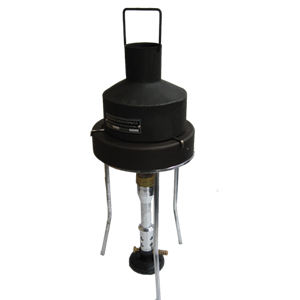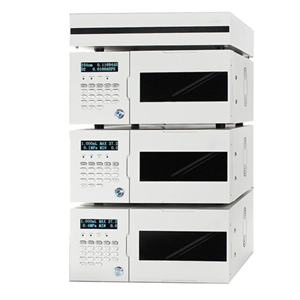-
ASTM D5185 Multielement By ICP
22 elements in used lubricating oils and in base oils, and it provides rapid screening of used oils for indications of wear. Test times approximate a few minutes per test specimen, and detectability for most elements is in the low mg/kg range. In addition, this test method covers a wide variety of metals in virgin and re-refined base oils. Twenty-two elements can be determined rapidly, with test times approximating several minutes per test specimen.
Send Email Details -
ASTM D189 Conradson Carbon Residue Tester
KN-189 Conradson Carbon Residue Tester conforms to ASTM D189 Standard Test Method for Conradson Carbon Residue of Petroleum Products. This apparatus covers the determination of the amount of carbon residue left after evaporation and pyrolysis of an oil, and is intended to provide some indication of relative coke-forming propensities. This test method is generally applicable to relatively nonvolatile petroleum products which partially decompose on distillation at atmospheric pressure, our KN-189 Provides an indication of relative coke forming properties of petroleum oils. The residue remaining after a specified period of evaporation and pyrolysis is calculated as a percentage of the original sample.
Send Email Details -
ASTM D5837 Apparatus for Furanic Compounds by HPLC
KN-5837 Furanic Compounds by HPLC conforms to ASTM D5837 Standard Test Method for Furanic Compounds in Electrical Insulating Liquids by High-Performance Liquid Chromatography (HPLC). Furanic compounds are generated by the degradation of cellulosic materials used in the solid insulation systems of electrical equipment. Furanic compounds which are oil soluble to an appreciable degree will migrate into the insulating liquid. High concentrations or unusual increases in the concentrations of Furanic compounds in oil may indicate cellulose degradation from aging or incipient fault conditions.
Send Email Details -
ASTM D7419 HPLC for Total Aromatics and Total Saturates
KN-7419 HPLC for Total Aromatics and Total Saturates conforms to ASTM D7419 Standard Test Method for Determination of Total Aromatics and Total Saturates in Lube Basestocks by High Performance Liquid Chromatography (HPLC) with Refractive Index Detection. The composition of a lubricating oil has a large effect on the characteristics and uses of the oil. The determination of saturates, aromatics and polars is a key analysis of this composition. The characterization of the composition of lubricating oils is important in determining their interchangeability for use in blending etcetera.
Send Email Details -
Automatic Dropping Point, Melting Point and Softening Point Tester
KN-70 Automatic Dropping Point, Melting Point and Softening Point Tester perfectly combines high-precision temperature control technology and high-definition video camera technology, not only to provide users with accurate, stable, and reliable test results, but also to provide users with efficient and convenient test experience. The high-definition video can easily and clearly see the whole process of the sample state change, and the real-time spectrum display is automatically detected, which is convenient for the user to accurately measure the dropping point/softening point of the sample. Standard cups and measurement methods can ensure the accuracy of the results.
Send Email Details -
ASTM D7525, ASTM D7545 Rapid Small Scale Oxidation Stability Tester
A 5ml sample is introduced into a vessel which is then charged with oxygen to 500kPa at a temperature of 15 to 25℃. The test is initiated by starting the heater and heating the pressure vessel to a temperature of 140℃. The pressure is recorded continuously until the breakpoint is reached. Alternatively, the test maybe terminated when a predetermined minimum requirement is reached.
Send Email Details -
ASTM D2274 Oxidation Stability Of Distillate Fuel Oil (Acceleration Method)
This test method provides a basis for the estimation of the storage stability of middle distillate fuels such as No. 2 fuel oil.
Send Email Details -
Metal Bath Pour and Cloud Point Tester
KN-97J Metal Bath Pour and Cloud Point Tester is suitable to the standards of ASTM D97 Standard Test Method for Pour Point of Petroleum Products and ASTM D2500 Standard Test Method for Cloud Point of Petroleum Products, It is used to test the pour and cloud point of petroleum products.
Send Email Details












